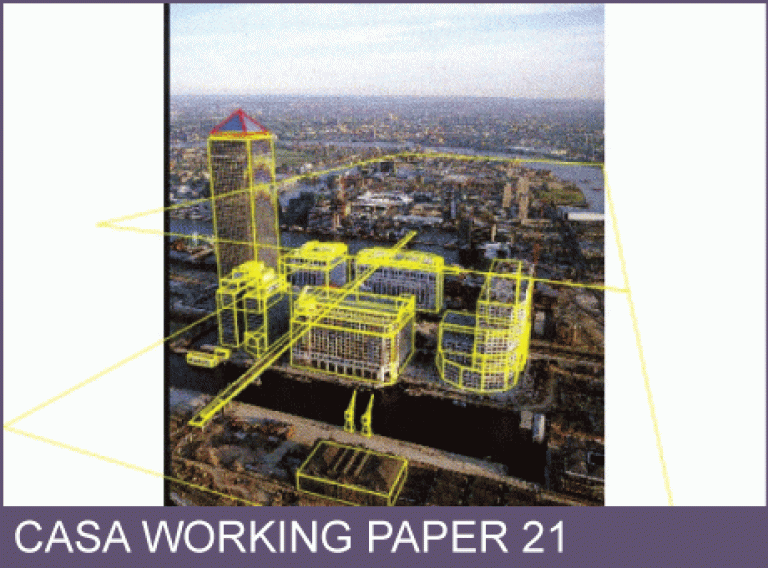CASA Working Paper 21

1 April 2000
New Technologies for Urban Designers: The VENUE Project
In this report, we first outline the basic idea of VENUE. This involves developing digital tools from a foundation of geographic information systems (GIS) software which we then apply to urban design, a subject area and profession which has little tradition in using such tools. Our project was to develop two types of tool, namely functional analysis based on embedding models of movement in local environments into GIS based on ideas from the field of space syntax; and secondly fashioning these ideas in a wider digital context in which the entire range of GIS technologies were brought to bear at the local scale. By local scale, we mean the representation of urban environments from about 1: 500 to around 1: 2500.
In the event, our project has ranged much wider than our original proposal. Here we begin by 2 outlining five areas of activity: namely the question of digital representation of local urban environments and their spatial representation, the development of relational functionality based on space syntax as the basis of urban design tools, incorporating the ability to make sketch plans within GIS which is a major function of urban design, the ability to extrude urban designs from the 2- dimensional map to 3-dimensional morphology which we achieved using VRML, and finally the development of a general digital context - a collaborative virtual design studio (CVDS) - in which a team of urban designers could use these tools in a participatory context.
These issues are dealt with first in cursory fashion and then in more detail. We then outline the project that we developed with graduate students of urban design at Oxford Brookes University, and also indicate how these tools have been used by graduate students of GIS at UCL. We then turn to ways in which we have disseminated the results of the project, primarily through web pages and regular printed publications but also through direct education and through the placing of our software in the public domain, such as on the ESRI web site (www.esri.com). We conclude with ideas for future research and list in the Appendices details of the project's publications, the team involved, its Steering Group, and the wider network of contacts we have established.
This working paper is available as a PDF. The file size is 3.13MB.
Authors: Michael Batty, Andrew Hudson-Smith, Martin Dodge, Bin Jiang
Publication Date: 1/4/2000
 Close
Close

